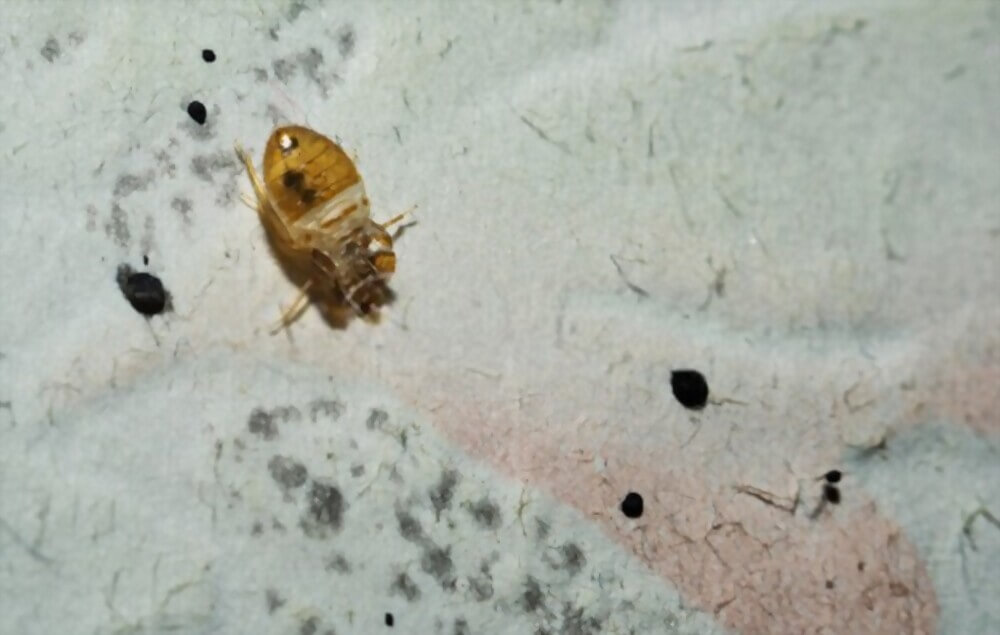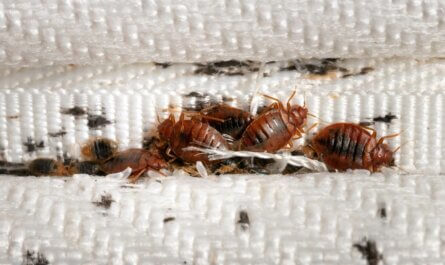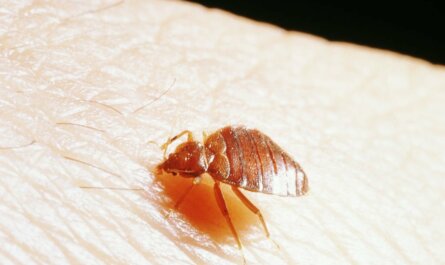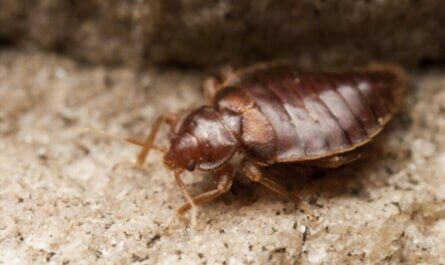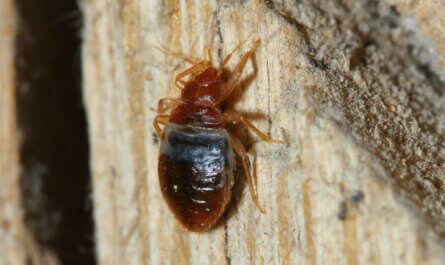Are you noticing mysterious bites or tiny casings around your home? You may be dealing with a bed bug infestation, a common but unwelcome pest that can hide anywhere – including your walls.
This blog post is dedicated to teaching you everything you need to know about these stealthy invaders, from identifying their hiding spots in walls to getting rid of them for good.
Get ready as we help you reclaim peace and comfort in your living space!
Key Takeaways
- Bed bugs can live in walls, using cracks and crevices as hiding spots within the structure of a home or apartment.
- Signs of bed bugs in walls include small reddish – brown fecal spots, rusty or reddish stains, pinpoint dark spots, bed bugs hiding in cracks and crevices, wall crawling bed bugs, and bed bug hiding spots inside wall cracks.
- To get rid of bed bugs in walls, you can use pyrethrin powder treatment, paint the walls to seal cracks and crevices (but it may not eliminate them completely), vacuum clean the walls (although it may not remove their eggs), or use residual pesticides.
- To prevent bed bugs from infesting your walls, seal cracks and crevices with caulking or sealant, inspect regularly for signs of activity like dark spots or eggs on the walls, clean thoroughly using a vacuum cleaner with a brush attachment to remove potential hiding spots, and use bed bug-proof mattress covers to trap any existing bugs.
Can Bed Bugs Live in Walls?
Bed bugs can indeed live in walls, using cracks and crevices as hiding spots within the structure of a home or apartment.
Bed bugs hiding in walls
Bed bugs are tiny creatures that find their way into wall crevices for protection and easy access to a meal. They spend most of their daytime hidden in the shadows of walls, floors, or furniture.
The presence of these pesky insects may be detected through signs such as fecal stains or shed skins on walls. They can invade your home through infested luggage, clothing, or second-hand furniture.
Often times, professional pest control services are needed to eliminate an infestation because these pests have built up resistance to common insecticides and they reproduce rapidly once inside a house.
Signs of bed bugs in walls
You might not realize it, but your walls could be harboring bed bugs. Spotting these tiny invaders requires careful examination. Here’s what to look for:
- Small reddish-brown fecal spots: The presence of these stains on your walls can indicate a bed bug infestation.
- Rusty or reddish stains: These could also be signs that bed bugs are present.
- Pinpoint dark spots: If you’ve noticed small dark specks on your wall, this might be cause for concern.
- Bed bugs hiding in cracks and crevices: During the day, these pests often hide out in the nooks and crannies of your walls.
- Wall crawling bed bugs: Yes, bed bugs can crawl up walls! Keep an eye out for any moving specks along your wall’s surface.
- Bed bug hiding spots inside wall cracks: These insects are known to conceal themselves in cracks within walls.
How to Get Rid of Bed Bugs in Walls
To eliminate bed bugs in walls, you can use pyrethrin powder treatment, paint the walls, vacuum clean them, or use residual pesticides.
Pyrethrin powder treatment
Pyrethrin powder treatment serves as an effective solution to combat bed bug infestations in walls. It’s a potent insecticide that mirrors the lethal effects of natural pyrethrins on these pests.
These synthetic chemicals, called pyrethroids, target and eliminate bed bugs efficiently. When properly applied directly into wall voids and crevices, this treatment can drive the bugs out from their hideouts swiftly, cutting down their numbers significantly.
However, safety comes first; follow all manufacturer guidelines for a safe pesticide application to ensure maximum efficacy against unwelcome wall-dwelling pests while maintaining a healthy living environment.
Painting the walls
Painting the walls can help in getting rid of bed bugs to some extent. While it may not completely eliminate them, painting can seal cracks and crevices where bed bugs often hide. This helps to reduce their hiding spots and make it harder for them to infest your walls.
However, it’s important to note that simply painting with regular paint does not contain insecticides like pyrethroids, which are effective in killing bed bugs. The smell and toxic ingredients in paint may temporarily kill the bugs, but they can return once the paint has dried up.
Therefore, while painting is a good preventive measure, it should be combined with other bed bug eradication methods for better results.
Vacuum cleaning the walls
Vacuum cleaning the walls is an effective method for getting rid of bed bugs in your home. Here are some important points to keep in mind:
- Vacuuming can help remove bed bugs that are gathered in clumps and have not been disturbed yet.
- It is important to vacuum thoroughly and regularly to dislodge any bed bugs hiding in the walls.
- Make sure to vacuum moldings, windows, and floors every day to control and remove bed bugs.
- Moving your bed away from walls or furniture can prevent bed bugs from accessing the bed.
- While vacuuming can remove many adult bed bugs and nymphs, it may not be as effective in removing their eggs.
- Insecticide sprays and dusts may be necessary for complete elimination of bed bugs.
Using residual pesticides
Residual pesticides are a highly effective method for getting rid of bed bugs in walls. These specialized products are specifically designed to target and eliminate bed bugs, without disrupting their normal activities.
Unlike some other treatments, residual pesticides have a long-lasting effect, continuing to kill bed bugs even after the initial application.
This makes them an excellent choice for homeowners, renters, landlords, and pest control professionals looking for a reliable solution to eliminate these pests from walls and prevent infestations from returning.
By using residual pesticides labeled for bed bug control, individuals can effectively manage and eliminate these unwelcome intruders from their living spaces.
Preventing Bed Bugs from Infesting Walls
Seal cracks and crevices, inspect regularly, and use bed bug-proof mattress covers to keep these pests out of your walls. Read on to learn more about protecting your home from bed bug infestations.
Sealing cracks and crevices
Sealing cracks and crevices is an essential step in preventing bed bugs from infesting your walls. It helps create a barrier that deters these pests from entering your home. Take the following measures to seal cracks and crevices:
- Inspect your walls thoroughly for any visible cracks or gaps.
- Use caulking or sealant to fill in these openings, ensuring a tight seal.
- Pay close attention to areas around baseboards, electrical outlets, and pipes.
- Consider using weatherstripping on windows and doors to prevent bed bugs from entering through those avenues.
Regular inspection and cleaning
Regular inspection and cleaning play a vital role in preventing bed bugs from infesting walls. Here are some key steps to follow:
- Inspect your walls regularly for any signs of bed bug activity, such as dark spots or eggs.
- Clean your walls thoroughly using a vacuum cleaner with a brush attachment to remove any potential hiding spots.
- Use a damp cloth or sponge to wipe down the walls, paying particular attention to cracks, crevices, and baseboards.
- If you notice any cracks or gaps in your walls, seal them with caulk or putty to prevent bed bugs from entering or escaping.
- Wash your walls with hot soapy water to help kill any bed bugs or their eggs that may be present.
- Consider using steam cleaners on your walls as the high temperatures can effectively eliminate bed bugs.
Bed bug-proof mattress and box spring covers
Using bed bug-proof mattress and box spring covers is an effective way to prevent bed bugs from infesting walls. These specially sealed encasements trap all the bed bugs inside the mattress and box spring, making it difficult for them to escape or find hiding places.
The smooth exterior of these covers also eliminates potential hiding spots for the bugs, making it easier to see and remove them if they do appear.
By fully sealing the mattress and box spring with a good quality encasement, you can effectively prevent bed bugs from entering your home or spreading throughout your property.
Whether you’re a homeowner, renter, landlord, or even a traveler staying in hotels, using these protective covers can give you peace of mind and help maintain hygiene and cleanliness in your living spaces.
Can Bed Bugs Travel Through Walls?
Bed bugs have the ability to travel through wall voids and chaseways, making it crucial to treat neighboring apartments or rooms during infestations.
Movement of bed bugs through wall voids and chaseways
Bed bugs have a sneaky ability to crawl through wall voids and chaseways, allowing them to travel between different areas within a building. They can take advantage of gaps in walls or use plumbing and electrical chase ways as pathways.
While bed bugs cannot fly or jump, their crawling skills enable them to move from one location to another. It’s important to be aware of their hitchhiking abilities – they can easily cling onto furniture, bedding, luggage, boxes, and clothing.
So whether you’re a homeowner, renter, landlord or traveler, it’s crucial to take preventive measures against these pests and be cautious when bringing items into your home.
Treating neighboring apartments or rooms
To prevent the spread of bed bugs from infested units to neighboring apartments or rooms, it is important to take immediate action. Here are effective ways to treat and control bed bug infestations in adjoining spaces:
- Conduct a thorough inspection: Inspect neighboring apartments or rooms for signs of bed bugs, such as live bugs, eggs, shed skins, or dark spots on mattresses, furniture, or walls.
- Notify property management or landlord: Inform the responsible party about the presence of bed bugs in the adjacent unit so that appropriate measures can be taken promptly.
- Hire a professional pest control service: Engage a licensed pest control professional with experience in dealing with bed bug infestations. They will conduct a comprehensive treatment plan tailored to the specific situation.
- Use residual pesticide treatments: Pest control professionals may apply residual pesticides along baseboards, wall voids, and other hiding places within adjoining walls to eliminate any hidden bed bugs.
- Heat treatments: Utilize heat treatment methods that can reach all areas inside the walls and effectively kill the bed bugs present.
- Encourage cooperation between residents: It is essential for neighbors to cooperate by allowing access to their units for inspections and treatments to prevent re-infestation.
- Follow-up inspections and treatments: Regularly inspect treated apartments or rooms to ensure complete eradication of bed bugs and prevent any future infestations.
Conclusion
Eliminating bed bugs hiding in walls can be a challenge, but with the right methods, it is possible to get rid of these pests. Treatments such as pyrethrin powder treatment, vacuuming, and using residual pesticides can help eradicate bed bugs on walls.
Preventive measures like sealing cracks and regular cleaning are crucial in keeping them from infesting your space again. Remember to promptly address any signs of bed bugs on walls to minimize their spread throughout your home.

